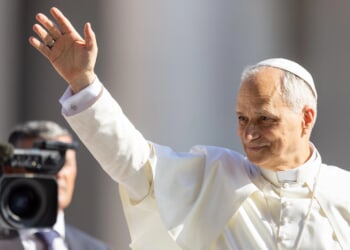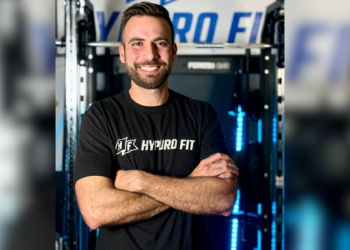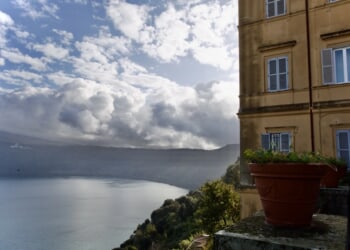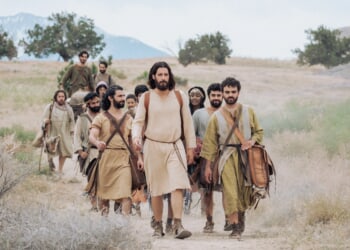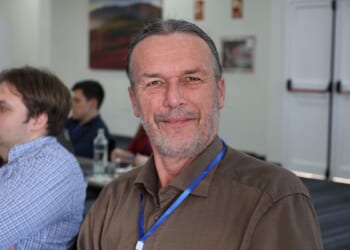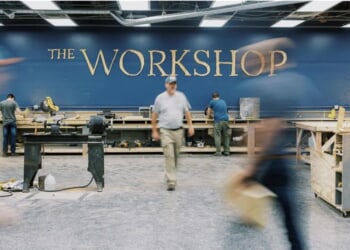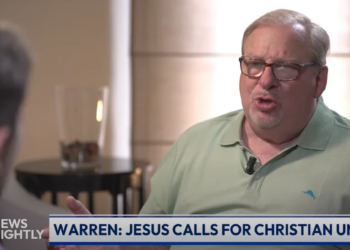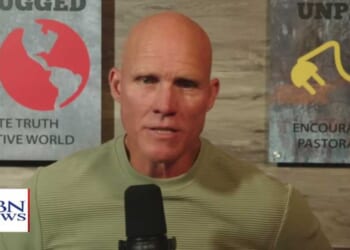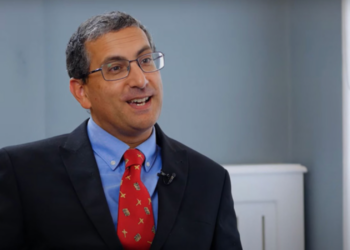Los Angeles, Calif., Jun 22, 2025 /
23:23 pm
The 2025 National Eucharistic Pilgrimage completed its 3,300-mile journey across the western United States Sunday, having traversed 10 states, stopping in 20 dioceses and encountering thousands of enthusiastic parishioners.
The trek started May 18 in Indianapolis, the site of the 10th National Eucharistic Congress in 2024, and concluded 35 days later at the Cathedral of Our Lady of the Angels in Los Angeles. The pilgrimage was an outgrowth of the U.S. Conference of Catholic Bishops’ (USCCB) three-year Eucharistic revival designed to promote belief in and devotion to the Eucharist among Catholics.
“We’ve had a wonderful reception, and the pilgrimage has borne much good fruit,” remarked Jason Shanks, president of the National Eucharistic Congress (NEC). “The pilgrims who have turned out have been in good spirits.”
The culminating event at the Cathedral included Mass celebrated by U.S. apostolic nuncio Cardinal Christophe Pierre, a homily by Los Angeles Archbishop Jose Gomez, and a procession through the Cathedral plaza.
Bishop Andrew Cozzens of Crookston, Minnesota, who led the USCCB’s Eucharistic revival program, and the auxiliary bishops of Los Angeles participated. The Cathedral, which seats 3,000, was full, and the procession ended with Archbishop Gomez blessing the City of Los Angeles in four directions, Shanks said, “which I hope will bring hope and healing to the city,” the scene of recent civil unrest.
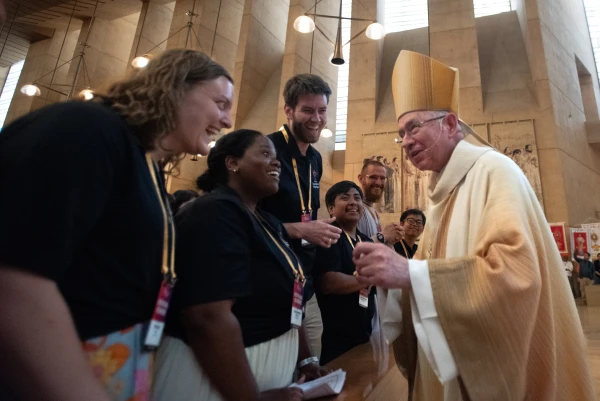
The pilgrimage visited multiple sites of prominence in the archdiocese, including Corpus Christi Parish in Pacific Palisades and Sacred Heart Parish in Altadena, both of which are in the zones of wildfire destruction in Los Angeles’ Jan. 7 Palisades and Eaton fires (Corpus Christi was destroyed, Sacred Heart survived). The pilgrimage also stopped at the first and the last missions established in the Los Angeles area by St. Junipero Serra, Mission San Gabriel (founded in 1771) and Mission Basilica San Buenaventura (established in 1782.)
Father Parker Sandoval, vice chancellor and senior director of ministerial services for the Los Angeles Archdiocese, was the main point of contact for the archdiocese and coordinated Los Angeles events with the NEC. He noted that each site at which the pilgrimage stopped was significant, such as of historical importance because they were 18th century missions, or because they were in the wildfire disaster zones.
“The archdiocese has been pleased to participate in the pilgrimage, and our hope and prayer is that the Eucharistic revival spreads far and wide,” he said.
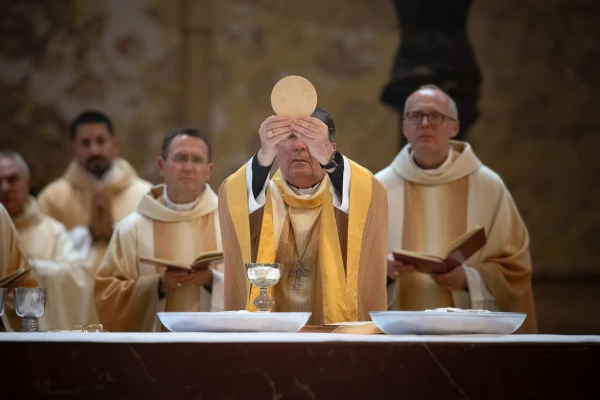
Archbishop Gomez, Cardinal Pierre, Bishop Cozzens and the auxiliary bishops participated in other events Friday through Sunday, including the events in the wildfire areas.
“We were there to pray for people and be part of the revival of life in those areas,” Cozzens said. “The people I spoke to told me that they were grateful of God’s presence in the midst of tragedy, and for their faith which has help sustain them in this time of trial.”
Pilgrims reflect on their journey
The pilgrimage traveled with eight young adults, known as perpetual pilgrims, traveling in a van with a trailer. Each diocese in which they made their stops acted as host, offering housing and food. The pilgrims found themselves spending the night in parishioners’ homes, retreat centers, religious houses, and hotels.
Ace Acuna, a perpetual pilgrim active in campus ministry with The Aquinas Institute on the campus of Princeton University in New Jersey, said he became passionate about the Eucharistic revival after attending the Indianapolis Congress last year.
“Everywhere we go people are excited to see us and give us a warm welcome,” he said. “They’re elated that Jesus is coming.”
(Story continues below)
Subscribe to our daily newsletter
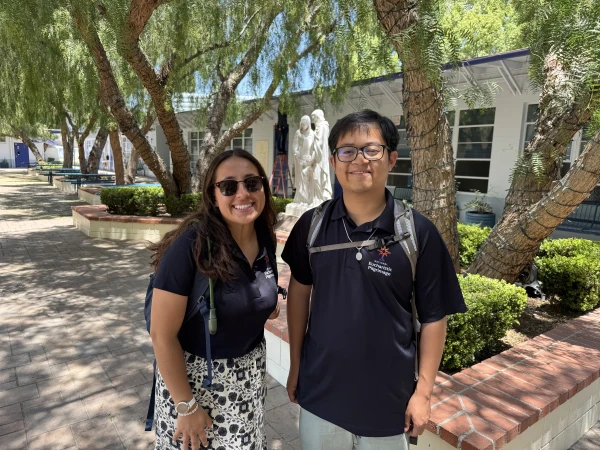
Like Acuna, perpetual pilgrim Leslie Reyes-Hernandez was moved by her experience at the Indianapolis Congress. Her experience on the pilgrimage this year has been “transformative,” she said, adding that she believes that Eucharistic adoration has the power to draw many young people like herself to the Lord.
“Young people are hungry for an encounter with God, and we’ve been blessed to meet many during this pilgrimage,” she said.
Activities at the diocesan stops included Mass, adoration, talks about the Eucharist, and processions. Many also took the opportunity to go to confession.
Pilgrims had to deal with protests
Attendance has been strong at many stops, Acuna related, including a Eucharistic procession to Holy Family Cathedral in Tulsa which drew 1,800.
The spiritual journey was not without controversy; as many as 50 protestors from the Church of Wells protested the pilgrimage along the route, with their biggest turnout in Oklahoma City.
“They were using megaphones to tell us Catholics were wrong in their beliefs and confronting our participants individually about Catholic practices such as the Rosary,” Shanks recounted. “They said they were looking to put the ‘protest’ back in Protestant.”
While additional security was added to protect perpetual pilgrims and surround the Blessed Sacrament, Shanks believes the group’s hostility did not adversely affect the pilgrimage.
“For us, this persecution was our Way of the Cross,” he said. “We were allowed to experience in a very small way the suffering of Christ.”
The pilgrims took side trips to sites of service or suffering along the route, such as a soup kitchen or to participate in prison ministry, and to the site of the Oklahoma City bombing. Other stops included a visit to the tomb of Bishop Fulton Sheen and the Shrine of Blessed Stanley Rother.
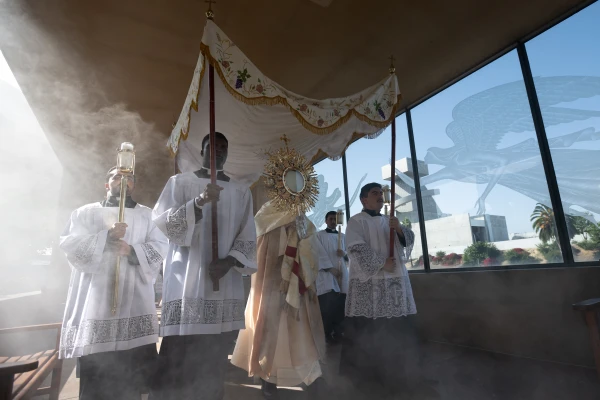
Although the pilgrimage has ended, the work of the National Eucharistic Congress continues, Shanks said. He hopes to do more annual pilgrimages, as well as an 11th National Eucharistic Congress in 2029. The NEC is also working to train Eucharistic missionaries who can return to their parishes to share their enthusiasm for Christ in the Eucharist.
Bishop Cozzens believes the USCCB’s Eucharistic revival program has been “a beautiful evangelistic moment,” adding that he hopes “the essential work of Eucharistic revival will continue through the Congress movement.”
The revival has exceeded his expectations for success, he said.
“I said we wanted to start a fire, not a program,” the bishop said. “And, today that fire of the Holy Spirit is burning brightly.”




